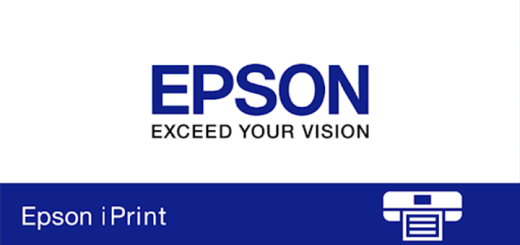THE CATASTROPHE OF PRINTING
In recent years, a whole series of events have taken place in the world of printing that can only be considered catastrophic.
And it is in a triple aspect, Ecological – Sanitary, of Competence and Social
Let’s start with the environmental catastrophe
One part is related to the machines themselves, and their more than questionable durability, as well as the “sales targets” that make this equipment barely reach 20% of its expected life…
It’s like we’re throwing away cars with 70,000 KM.
But we will focus much more on the cartridge, since it is this element that determines to a greater extent the ecological and health impacts, as well as those of competition and social impacts.

Around 505 million cartridges are sold in Europe each year according to industry data from Oakdene Hollins’ report on cartridge reuse to the European Commission.
The figure can be considered relatively stable in recent years although, and this is a fact reflected in the study, the Manufacturers have been negligent in providing verifiable data.
And here the catastrophe begins; why don’t the Manufacturers measure and report?
Well then, so that it is not discovered that, their feigned green effort is not so, proving the little effort in the recovery and treatment of their waste, which is also highlighted in the aforementioned study .
But we’re going to continue
With these approximate same data, the market 10 years ago had a remanufacturing usage share of approximately 18% and the Clone cartridges were only 2-3%.
With all the winds in favor of Remanufacturing and sustainability, how is the market today?
Well, of the approximately 42 million cartridges sold per month in Europe, 1.8 million are remanufactured, this is barely 5%, while the number of Clones reaches 2.7 million, or 6.4%…
This means that 13% of the cartridges, (18%-5%), are no longer being reused and have become waste…
This has of course led to the closure of many companies in the sector AND THE DESTRUCTION OF NUMEROUS JOBS:
This means that EACH MONTH the waste generation has increased ( With an average core weight of 200 grams, average toner and ink) 5.46 million cartridges per 200 grams. That means something more than 1 million kilos that were not generated before…
But this is by no means the worst, as we have to add to this the clones that are a separate case.
These cloned cartridges, which enter the market in a massive and uncontrolled manner, represent waste totaling one million and a half kilos per month.
So roughly speaking, the total increase in waste is over 1.5 million kilos per month.
Waste that is now considered as electronic waste and which has a destruction period of 1000 years..
So the cartridges, their parts and contents will be seeping into our aquifers for centuries.
If the reader is already frightened……….wait and see
The clones that reach the market are more than dangerous, highly toxic
Several tests confirm that emission limits are continuously exceeded during printing.
During some test, more than 53% emitted more styrene in the toner melt than the allowed limit, more than 60% emitted more ultrafine particles than the law requires ( These particles are extremely toxic because their size allows them to enter directly into the bloodstream regardless of their composition). and also 100% emitted more volatile organic substances than the law allows.
So BRAVO for our health!
If this were not enough for the authorities to take it seriously, it turns out that none of the manufacturers/importers has a core collection system so that the ultimate destination of the empty clones is ……Let’s see
What can they do with these housings? Well, practically nothing, because their quality of manufacture is so low, that it is impossible to manufacture them. Those are truly single use toxic plastic items!
Plastic could not be used as a raw material either, due to poor quality and toxic content, so the only option could be to use it as an energy source, i.e. to incinerate.
We cannot do this either, because the tests carried out, show that plastics contain flame retardants in proportion six times higher than the limits marked with substances of very high concern and that it would not only be desirable for them not to appear on the plastic, but that in the case of doing so the packaging should be clearly informing about it
At this point readers must think; What an outrage!
There’s more to it than that, so let’s go to the social part, the social catastrophe.
The European Commission itself and all the national authorities know that in the current scenario, remanufacturing not only avoids impacts, but also generates a great number of jobs, and in fact this is the case.
In the field of remanufacturing cartridges, for relatively large installations, it is estimated that 200 people are needed to recycle 30,000 units per month, so that every 150 cartridges per month generates one job.
This figure could even bigger as more jobs are needed for smaller structures, but we will take the unfavorable data.
So if 80% of the Clone was transferred to Remanufactured ( And we have already seen that it would not be difficult to promote legal measures to do so; simply compliance with the law) we would find ourselves with a demand for 2.16 million cartridges per month or 14,400 direct jobs and 30% more indirect jobs (“From collection, to sale of materials, packaging, etc.”).
If the remanufacturing figure were also increased by 20%, this would mean the irruption of 42 million / month x 20% 8.4 million cartridges, or 56,000 more direct jobs.
Assuming an average salary similar to that of Spain of 25,000 € per year we would find ourselves with..:
14,000+56,000 = 70,000 x 25,000 € = 1,750,000,000,000 – million of wage bill generated
At a time when robots are challenging employment, creating 70,000 jobs and putting a wage bill of €1.75 billion in the pockets of Europeans is not bad!
Let us now enter the Catastrophe of the competition
Here we find what we might call the “sandwich of the poor”, a lot of bread upstairs pressing, those are manufacturers of new equipment and cartridges, a lot of bread downstairs, in this case manufacturers of clones, and what is important is the rather scarce juicy middle.
The manufacturers, as we have already seen, prefer NOT TO MEASURE so that they are not embarrassed.
It is also a market where opportunities to avoid / offset free choice of consumers are very high.
First of all because of the very high concentration, as only three manufacturers monopolize 79% of machine sales. By comparison, the three main car manufacturers have only 23% of the market!
On the other hand, as this is a three-layer market, i.e. the device, its spare parts and service, and consumables, the opportunities for control are multiplied.
For them today it is easy to keep a practically real-time control of the consumable used, so that their FUD departments responsible for transmitting fear, uncertainty and doubt, are responsible for erasing any attempt of free choice, and practices to do so, are not infrequent, like remote blocking, or firmware update that threaten the daring users who tried to make a free purchase.
Not to talk about all the ARUDS anti re-utilization devices placed on consumables !
This is the only way to explain an inverted market, where the most expensive is sold more!
The other part of this competitive scenario is made up of clones.
These are just the result of China’s inability to compete loyally in remanufacturing!
The quality of the Chinese remanufacturing and the costs of market access would have resulted in a very weak position and Chinese authorities have strong subsidies for printer consumables!
At this point it is evident that any factory working under such quality standards on European territory, or even may be just outside of China, because of lower labor costs (Thailand, Vietnam, etc.) of cloned cartridges would be closed immediately, either because of non-compliance with property rights (patents), pollution or threats to public health.
These strategies make a fair competitive scenario TOTALLY IMPOSSIBLE.
Thus, the most serious channels (Retailers Wholesalers etc.), are reluctant, and not without a reason, to distribute quality remanufactured products in the certainty that they will not be able to compete with the cloned products.
So the best products, let’s say the “ham or cheese ” of the sandwich , reach the market in such a way that, there is no fair competition and no possibility to loyally compete
It is clear that the European industry and the serious distribution channels are in inferiority and in view of all the above, how long will it take the authorities involved to take action?
Javier Martinez Zavala
Environmental Engineer and Member of the Board of Directors of ETIRA
TRADUZIONE ITALIANA:
LA CATASTROFE DELLA STAMPA
Negli ultimi anni si sono verificati nel mondo della stampa tutta una serie di eventi che non possono che essere considerati catastrofici.
Ed è in un triplice aspetto: Ecologico – Sanitario, di Responsabilità Sociale. Partiamo dalla catastrofe ambientale
Una riguarda le macchine stesse, la loro durata più che discutibile e gli “obiettivi di vendita” che fanno sì che questa attrezzatura raggiunga appena il 20% della sua vita…
E’ come se buttassimo via auto con 70.000 KM.
Ma ci concentreremo molto di più sulla cartuccia, dal momento che è questo elemento che determina in misura maggiore gli impatti ecologici e sulla salute, così come quelli della concorrenza e gli impatti sociali …

Ogni anno in Europa vengono vendute circa 505 milioni di cartucce, secondo i dati forniti alla Commissione europea dalla Relazione di Oakdene Hollins sul riutilizzo delle cartucce.
La cifra può essere considerata relativamente stabile negli ultimi anni anche se, come dimostra lo studio, i fabbricanti sono stati negligenti nel fornire dati verificabili.
E qui inizia la catastrofe; perché i Costruttori non rilevano e non informano?
Per non scoprire che il loro presunto sforzo verde non è vero, dimostrando lo scarso sforzo nel recupero e nel trattamento dei loro rifiuti, che è anche evidenziato nello studio di cui sopra.
Ma continueremo
Con questi dati approssimativi, il mercato di 10 anni fa aveva una quota di utilizzo della Rigenerazione di circa il 18% e le cartucce Clone erano solo del 2-3%.
Con tutti i venti a favore della Ricostruzione e della Sostenibilità, come è il mercato oggi?
Ebbene, dei circa 42 milioni di cartucce vendute al mese in Europa, 1,8 milioni sono ricostruite, si tratta di appena il 5%, mentre il numero di cloni raggiunge i 2,7 milioni, ovvero il 6,4% …
Ciò significa che il 13% delle cartucce (18%-5%) non vengono più riutilizzate e sono diventate rifiuti…
Ciò ha naturalmente portato alla chiusura di molte imprese del settore e alla perdita di posti di lavoro:
Ciò significa che ogni mese la produzione di rifiuti è aumentata ( con un valore di peso del nucleo di 200 grammi, toner e inchiostro in media) di 5,46 milioni di cartucce per 200 grammi. Questo significa qualcosa di più di 1 milione di chili che non sono stati generati precedentemente.
Ma questo non è ancora il dato peggiore, perché dobbiamo aggiungere i cloni che sono un caso a parte.
Queste cartucce clonate, che entrano sul mercato in maniera massiccia e incontrollata, rappresentano rifiuti per un totale di un milione e mezzo di chilogrammi al mese.
L’aumento totale dei rifiuti è quindi di oltre 1,5 milioni di chilogrammi al mese.
Rifiuti che ora sono considerati rifiuti elettronici e che hanno un periodo di distruzione di 1.000 anni.
In questo modo, le cartucce, le loro parti e il loro contenuto penetreranno nelle nostre falde acquifere per secoli.
Se il lettore è già spaventato deve attendere e leggere il seguito.
I cloni che arrivano sul mercato sono più che pericolosi, altamente tossici
Diversi test confermano che i limiti di emissione vengono continuamente superati durante la stampa.
Durante alcuni test, più del 53% ha emesso più stirene nella fusione del toner rispetto al limite consentito, più del 60% ha emesso più particelle ultrafini rispetto a quanto richiesto dalla legge (queste particelle sono estremamente tossiche perché le loro dimensioni consentono loro di entrare direttamente nel flusso sanguigno indipendentemente dalla loro composizione). e anche il 100% ha emesso più sostanze organiche volatili rispetto a quanto consentito dalla legge. Quindi “Ottimo” per la nostra salute!
Se questo non bastasse alle autorità per prenderlo sul serio, si scopre che nessuno dei produttori/importatori ha un sistema di raccolta di base in modo che la destinazione finale dei cloni vuoti sia…. vediamo cosa
Che cosa possono fare con queste custodie? Ebbene, praticamente nulla, perché la loro qualità di fabbricazione è così bassa che è impossibile lavorarli ne riutilizzarli . Si tratta di oggetti di plastica tossici monouso!
Nemmeno la plastica può essere utilizzata come materia prima, a causa della scarsa qualità e del contenuto tossico, quindi l’unica opzione potrebbe essere quella di utilizzarla come fonte di energia, cioè di incenerirla. Anche questo non è possibile, perché i test effettuati dimostrano che le materie plastiche contengono ritardanti di fiamma in proporzione sei volte superiore ai limiti indicati con sostanze estremamente pericolosi e che sarebbe auspicabile non solo che non comparissero nella plastica, ma che in tal caso la confezione ne facesse chiaramente menzione.
A questo punto i lettori devono pensare: Che scandalo! C’è di più, quindi passiamo alla responsabilità sociale, alla catastrofe sociale.
La stessa Commissione europea e tutte le autorità nazionali sanno che, nello scenario attuale, la ricostruzione non solo evita gli impatti, ma genera anche un gran numero di posti di lavoro, e in effetti è così.
Nel campo della rigenerazione delle cartucce, per installazioni relativamente grandi, si stima che siano necessarie 200 persone per riciclare 30.000 unità al mese, in modo che ogni 150 cartucce al mese generino un posto di lavoro.
Questa cifra potrebbe essere ancora maggiore in quanto sono necessari più posti di lavoro per strutture più piccole, ma prenderemo i dati poco favorevoli.
Così se l’80% del clone fosse stato trasferito a Ricostruito (e abbiamo già visto che non sarebbe stato difficile promuovere misure legali per farlo; semplicemente conformità con la legge) ci troveremmo con una domanda di 2,16 milioni di cartucce al mese o 14.400 posti di lavoro diretti e il 30% di più posti di lavoro indiretti (“Dalla raccolta, alla vendita di materiali, imballaggi, ecc.).
Se il quantitativo di prodotto ricostruito fosse aumentato anche del 20%, ciò significherebbe l’irruzione di 42 milioni al mese x 20% 8,4 milioni di cartucce, ovvero 56.000 posti di lavoro più diretti. Ipotizzando uno stipendio medio simile a quello della Spagna di 25.000 € all’anno ci troveremmo con..:14.000+56.000 = 70.000 x 25.000 € = 1.750.000.000.000 – milioni di massa salariale generata
In un momento in cui i robot sfidano l’occupazione, creare 70.000 posti di lavoro e mettere una massa salariale di 1,75 miliardi di euro nelle tasche degli europei non è male!
Entriamo ora nella Catastrofe del confronto competitivo
Qui troviamo quello che potremmo chiamare il “panino dei poveri”, un sacco di pane al piano superiore che pressa, questi sono i produttori di nuove attrezzature e cartucce, un sacco di pane al piano inferiore, in questo caso i produttori di cloni, e ciò che è importante, in mezzo una fetta scarsamente succosa.
I produttori, come abbiamo già visto, preferiscono NON MISURARE per non essere in imbarazzo.
Si tratta inoltre di un mercato in cui le opportunità di impedire / limitare la libera scelta dei consumatori sono molto elevate.
Prima di tutto per l’altissima concentrazione, in quanto solo tre produttori monopolizzano il 79% delle vendite di macchine. In confronto, le tre principali case automobilistiche detengono solo il 23% del mercato!
D’altro canto, poiché si tratta di un mercato a tre livelli, vale a dire il dispositivo, i suoi pezzi di ricambio e il suo servizio, e i materiali di consumo, le possibilità di controllo si moltiplicano.
Per loro oggi è facile mantenere un controllo praticamente in tempo reale del materiale di consumo utilizzato, in modo che i loro dipartimenti FUD responsabili della trasmissione di paura, incertezza e dubbio, sono responsabili per annullare qualsiasi tentativo di libera scelta, e le pratiche per farlo, non sono infrequenti, come il blocco remoto, o aggiornamento del firmware che minacciano gli utenti audaci che hanno cercato di fare un acquisto libero.
Per non parlare di tutti i dispositivi antiriutilizzo ARUDS posti sui materiali di consumo!
Questo è l’unico modo per spiegare un mercato al contrario, dove il più costoso è quello che viene venduto di più!
L’altra parte di questo scenario competitivo è costituita dai cloni.
Questi sono solo il risultato dell’incapacità della Cina di competere lealmente nella Rigenerazione!
La qualità della ricostruzione cinese e i costi di accesso al mercato avrebbero portato a una posizione molto debole e le autorità cinesi hanno forti sovvenzioni per i materiali di consumo delle stampanti!
A questo punto è evidente che qualsiasi fabbrica che lavori sotto tali standard di qualità sul territorio europeo, o anche solo appena fuori dalla Cina, a causa del minor costo del lavoro (Thailandia, Vietnam, ecc) di cartucce clonate avrebbe chiuso immediatamente, sia a causa della non conformità con i diritti di proprietà (brevetti), inquinamento o minacce per la salute pubblica.
Queste strategie rendono uno scenario competitivo equo TOTALMENTE IMPOSSIBILE.
Così, i canali più seri (rivenditori all’ingrosso, ecc.), sono riluttanti, e non senza motivo, a distribuire prodotti di qualità ricostruiti nella certezza che non saranno in grado di competere con i prodotti clonati.
Così i prodotti migliori, diciamo il “prosciutto o formaggio” del panino, arrivano sul mercato in modo tale che non ci sia concorrenza equa e non ci sia possibilità di competere lealmente.
E’ chiaro che l’industria europea e i seri canali di distribuzione sono in inferiorità e alla luce di quanto sopra, quanto tempo ci vorrà per agire da parte delle autorità coinvolte?
Javier Martinez Zavala
Ingegnere ambientale e membro del Consiglio di Amministrazione di ETIRA























